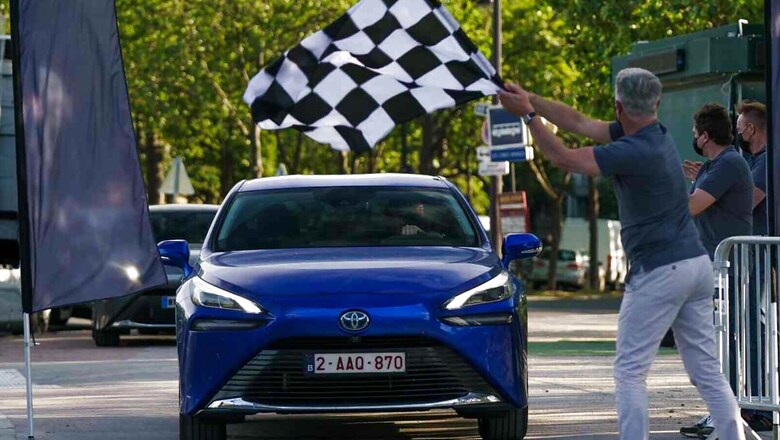
views
India is pushing hard for alternate sources of fuel that can replace conventional fossil fuels. Skyrocketing fuel prices along with the poor air quality of several cities in India have encouraged the government to bring out schemes and incentives for buyers who choose greener options. Recently, the Union Minister of Road Transport and Highways, Nitin Gadkari made a statement by arriving at the Rajya Sabha in a Toyota Mirai, a hydrogen FCEV.
While Hydrogen FCEVs still is in their nascent stage, EVs are at the forefront with booming infrastructure as well as products that are aiming to ground their dominance amidst a surge in demand. Hence, as both the alternatives pose a viable solution, here is how the two compare against each other.
Electric Vehicles Range
Speaking of electric cars, the range is dependent on which vehicle you buy. While the more expensive ones like the Tesla Model S Long Range have a range of over 600kms compared to a real-world range of 250km for the less expensive cars like the Tata Nexon EV.
Hydrogen FCEV Range
Hydrogen fuel cell cars, on the other hand, return greater ranges and faster refuelling times too. The Hyundai Nexo, for example, can manage 666km and only takes five minutes to fill up, as opposed to the hours it can take to recharge an electric vehicle.
Electric Vehicles Charging Infrastructure
EVs are the new buzzword in the world of mobility. The shift to electric vehicles is on a massive scale around the globe. Hence, in this kind of popularity where every major automaker is scrambling for a piece of the pie, the infrastructure is also developing rapidly. India currently operates around 1640 EV charging stations.
Hydrogen FCEV Charging Infrastructure
Not only are hydrogen fuel cell cars more expensive than many electric cars but they also have much less infrastructure when it comes to refuelling. Building a hydrogen vehicle charging station might be futile with not enough cars running on the road.
Electric Vehicles Safety
Lithium-Ion batteries come with their safety concerns and challenges. If lithium-ion batteries are allowed to overheat or overcharge they can cause a major fire. Plus, should there be a fire, the batteries can ignite and are difficult to put out as the fuel for the fire is not vented away as with hydrogen. However, manufacturers have been working to solve these issues by regulating temperatures and using multiple sets of smaller batteries to avoid overcharging.
Hydrogen FCEV Safety
Since the inception of the technology, safety has been a key concern for hydrogen fuel cells, due to the highly flammable nature of hydrogen gas, which burns in air at concentrations ranging from 4 to 75%. However, it should be noted that technological advances have resolved many of these potential safety issues. The Toyota Mirai, for instance, comes with a patented design to prevent hydrogen leakage as well as shutting off the flow of hydrogen in the event of a collision and storing the fuel tank outside of the cabin. Hence, in the unlikely event of a leak the gas will vent harmlessly up into the atmosphere. Because hydrogen is lighter than air, it diffuses directly up into the air, making it safe unless it is allowed to build up in enclosed spaces in large quantities.
Electric Vehicles Cost of Ownership
Electric vehicles can be expensive to buy, depending on the exact model and manufacturer, even with government grants to help support buyers and bring prices down. As mentioned above, the more expensive the model, the greater the range it offers.
Also Watch:
Hydrogen FCEV Cost of Ownership
Hydrogen vehicles are more expensive than electric vehicles. At the moment there are little to no budget options on the market. The price tag for a new hydrogen vehicle is comparative to that of a top-end electric vehicle. However, hydrogen-powered vehicles still tend to be expensive to buy as there are yet to be any models at the budget end of the market.
Read all the Latest Auto News and Breaking News here


















Comments
0 comment